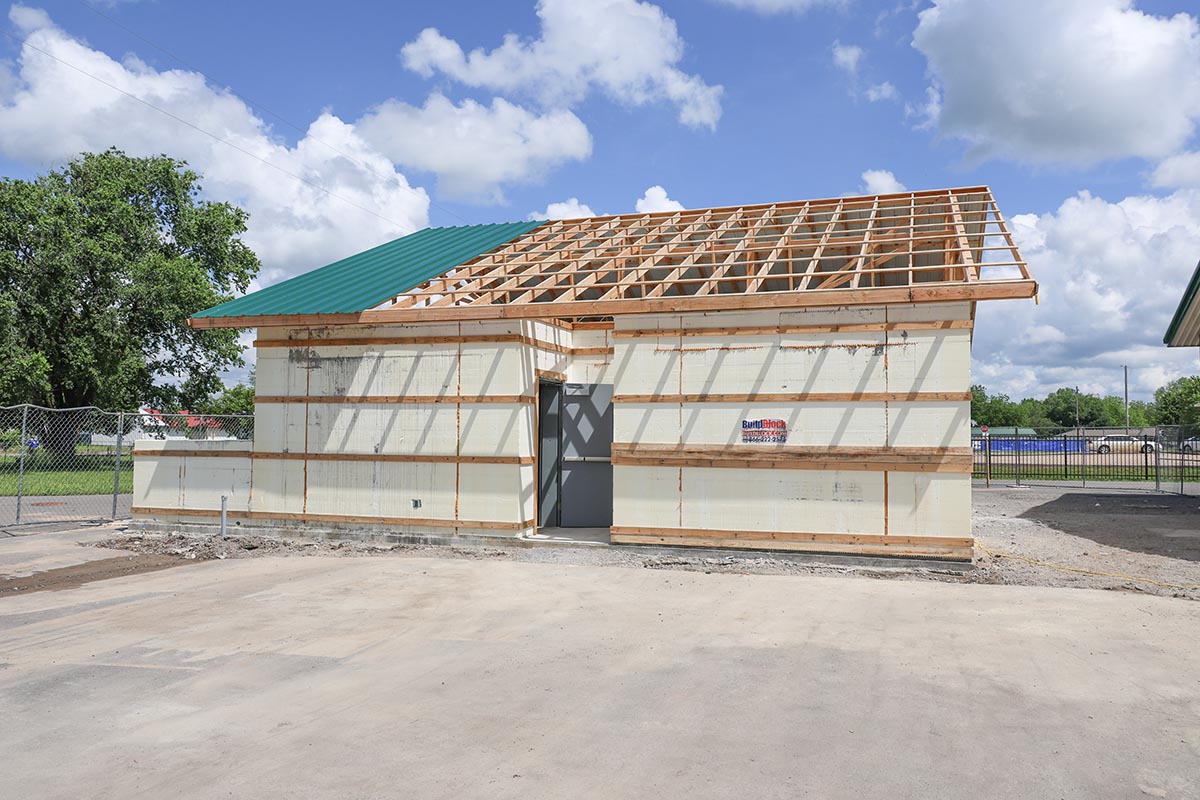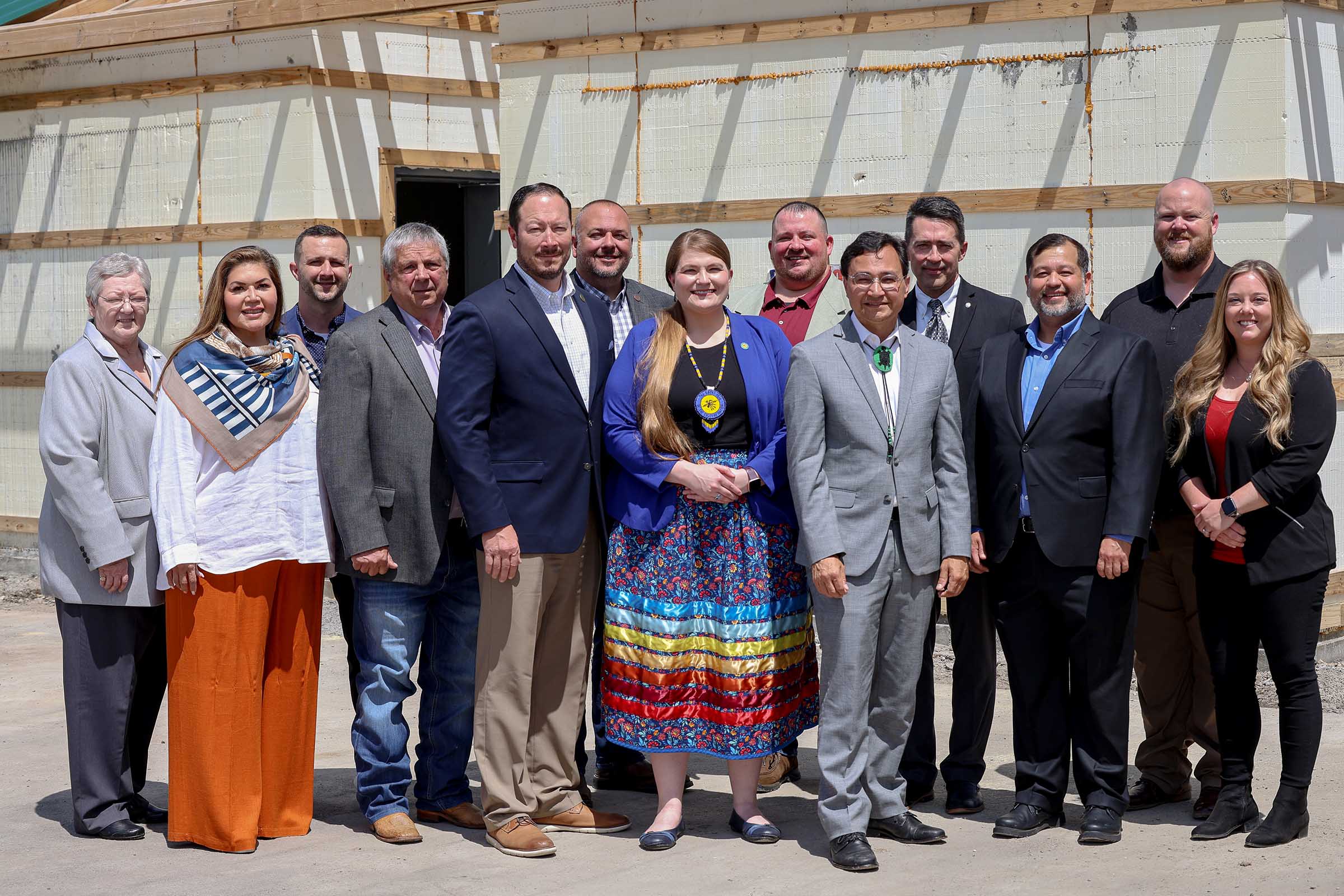HULBERT, Okla. —Federal Emergency Management Agency leaders visited the Cherokee Nation Thursday to tour a community storm shelter being built by the tribe in Hulbert.
The Cherokee Nation’s new community storm safe shelter is one of seven in the reservation funded by a FEMA grant to help protect Cherokee communities during the event of severe storms and weather. In Hulbert, nine tornados have touched down since 2015.
“The Cherokee Nation believes in the safety and protection of our families and communities, and are extremely thankful we could partner with FEMA and our emergency management team to provide resources during natural disasters,” Cherokee Nation Principal Chief Chuck Hoskin Jr. said. “We will continue to serve our citizens’ needs to ensure their safety and well-being is met and are committed to reducing the risk and loss of life and property by lessening the impacts of future disasters.”
The Hulbert community storm shelter construction began in January and will be completed by July. It will be 1,280 square feet and accommodate up to 256 people while withstanding winds greater than 200 mph. It will connect to the current Hulbert Community Center at 405 S. Rogers Ave.
Upcoming community shelters will be built at the Durbin Feeling Language Center in Tahlequah and the Tsa-La-Gi apartments in Sallisaw. Four other community storm shelters have already been built at the Cherokee Nation Emergency Medical Services building and in the communities of Tailholt, Greasy and Chewey.
“If we can protect our citizens and communities, the impact of our response and recovery after a disaster is stronger, faster and longer lasting,” Cherokee Nation Senior Director of Public Safety Philip Manes said. “Oklahoma is known for its wild and unpredictably strong weather patterns, specifically tornadoes. Tornado and storm shelters are an essential piece of the life safety matrix, they are at times a way of life for many citizens. Cherokee Nation Emergency Management appreciates the support of FEMA grants and the ability to provide a “safe haven” in these shelters to give a piece of mind and protect our citizens and communities before a disaster occurs.”
Also Thursday, Chief Hoskin and Deputy Chief Warner announced a new $2.4 million program that will provide 300 elders or those with disabilities with above ground storm shelters.
The ᎦᎵᏦᏗ (Shelter) program will be funded from the tribe’s American Rescue Plan Act dollars.
The Housing Authority of the Cherokee Nation is currently taking applications for this new program. Once applications are verified and a site inspection is concluded, the first storm shelter installations should begin in June and should complete in 10-12 months.
To download the application for the storm shelters, visit https://www.hacn.org/rehab. The application is part of the rehabilitation application and has a section for storm shelters.

“Here on the reservation, we face some of the most unpredictable weather at times,” Deputy Chief Bryan Warner said. “Storm shelters are an essential component here on the reservation to keep Cherokee families’ safe. It’s such a blessing that communities like Hulbert and across our reservation, as well as are elders and disabled, are getting a place to take shelter. These shelters will bring comfort to so many of our citizens.”
The Cherokee Nation had previously installed storm shelters at its Stilwell and Tahlequah Head Starts and Tahlequah Child Development Center with other federal grants. Sequoyah High School also has a community storm shelter in place.
Visiting the Cherokee Nation on Thursday was FEMA National Tribal Affairs Advocate Kelbie Kennedy and FEMA Region 6 Grants Division Director Mark Price.
While in Hulbert, FEMA leaders toured the construction site and discussed upcoming additional funding to help tribal nations build a resilient infrastructure.
"We are proud to parnter with the Cherokee Nation on projects like this storm shelter," said Mark Price FEMA Region 6 Grants Division Director. "FEMA grant funding used to make communities more resilient will save lives and help communities recover from stomrs faster, which is money well spent."

